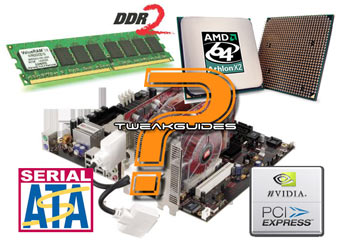Hardware Confusion
Author: Koroush Ghazi
Last Modified: May 2007
For several months now I have been talking about my personal 'hardware confusion' dilemma - how to decide which new technologies I will choose for my next PC upgrade. It's a common problem for many people out there given how many major tech developments there have been in recent times, including (but not limited to):
And the list goes on.

Obviously this can all be very confusing, even to the most experienced of us. How many of these technologies are worth shelling out more cash to upgrade to, and how many are simply hype? We all remember the 'new' technological developments which turned out to be not-so-exciting, and had little (if any) impact on performance when they were first released. Remember AGP8x vs. AGP4x? How about SATA vs. traditional PATA drives.
Amongst this confusion, I thought it was time to dive straight in and update my ageing (though still very competent) PC. I wanted the best I could afford, but not just getting the best for bests' sake if you know what I mean. I wanted to future-proof my system as much as possible, realizing that in the PC world there is no such thing as totally 'future proof'. Finally, I just wanted a system which worked straight off the bat, without all those terrible incompatibility issues, bottlenecks and hardware glitches we keep hearing about from various setups.
Well I made my decision as to which new hardware to invest in, and the results are on the following pages for you to see. However this article isn't just about me showing off my new rig. The whole point is to share with you the reasoning behind it, the kinds of things I learnt along the way, and the kind of stuff that many tech reviews never really cover: what is the practical difference from a daily use perspective. Think of it as one man's journey through the hardware selection, purchasing and building process - nothing more, nothing less.
With that in mind, and if you have some time to spare, read on!
Note: This article is not sponsored directly or indirectly by any hardware/software developer, manufacturer or retailer. I did not receive any free samples either, although sometimes when I look at my bank balance I wish I did!
Note 2: A newer version of this article entitled Hardware Confusion 2009 is now available, and is recommended instead of this older version originally written in 2005.
